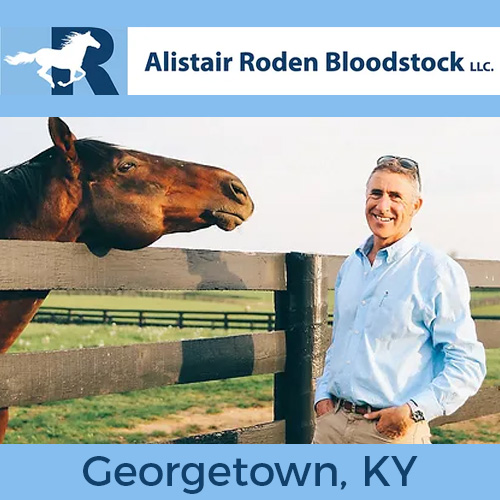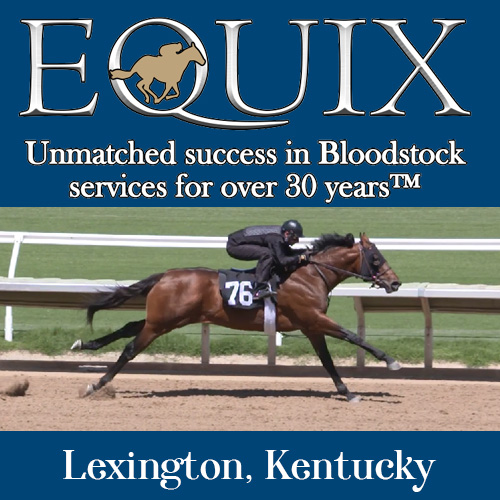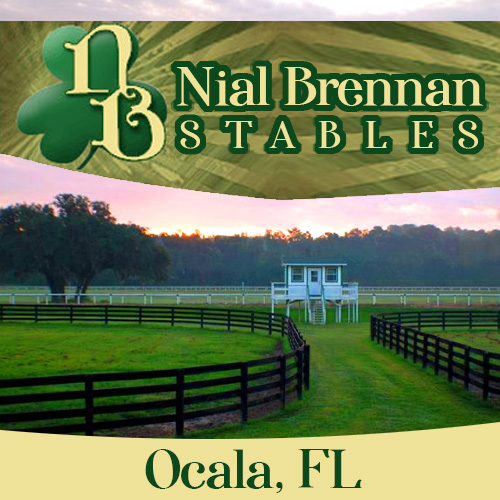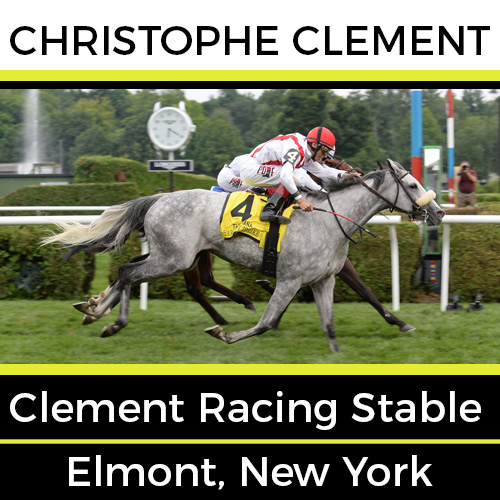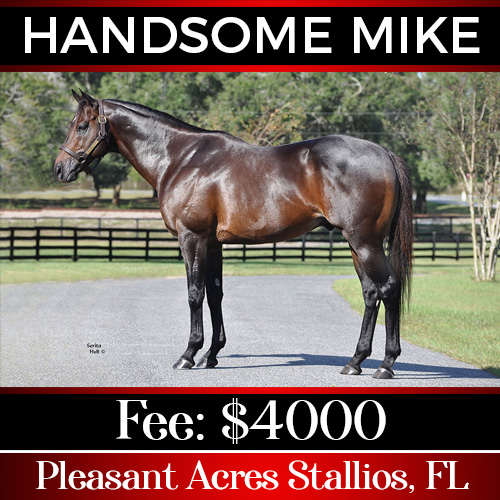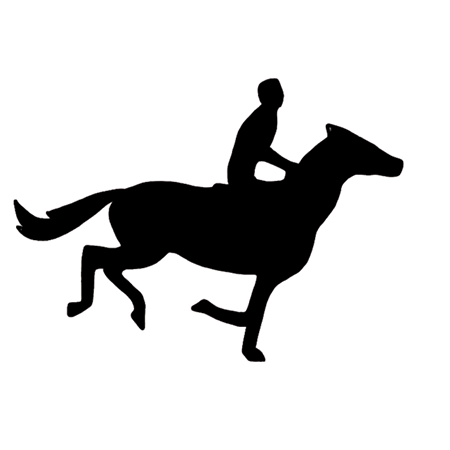Thoroughbred People's Equine Legends Series: American Eclipse
“I believe we lost by the absence on the occasion of one of Virginia’s best sons, who had a ‘rascally ague’ at the time,” the Honorable John Randolph of Roanoke said during a session of Congress after Sir Henry met defeat at the hooves of American Eclipse. From May 27, 1823, which was the date of “The Great Match Race,” Randolph “could never endure the sight of a lobster, because, as he stated, “it was a supper of lobsters, not Eclipse, that beat us. If Johnson had been there the day would have been ours. As it is-Eclipse will gain more fame for beating such a horse as Henry than for winning the race.”
The contest Randolph is referring to with such rancor, captivated the country, was the first recorded instance of a sporting event and was a precursor of future bellicosity between the North and South. A crowd of more than 60,000 people packed the stands at the newly minted Union Racecourse in Jamaica, New York, which was a mere three miles from present day Aqueduct, President Andrew Jackson and former Vice President Aaron Burr were on hand to witness the duel and the Stock Exchange ceased operations in honor of the event.
Despite the fervor that swept the nation, many feared the solidification of sectional rivalry between the Northern champion Eclipse and the Southern star on the rise in Sir Henry. This affair, “may do no harm, if it do not recur oftener than once a century,” expressed The Statesman, “But an annual excitement of the same description is certainly to be deprecated, since its inevitable tendency would be to arraign the north against the south, and produce a deep-rooted hostility.”
So what transpired to culminate in a sporting event of this magnitude and significance? It commences with the birth of American Eclipse.
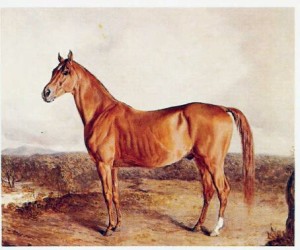 On May 25, 1814, a chestnut colt with a white star and a white hind right ankle was born at General Nathaniel Coles’ farm in Queens County, Long Island. Coles’ newest arrival was the progeny of his pride and joy Miller’s Damsel, a daughter of the renowned Messenger, who was known as the “Queen of the Northern Turf” during her racing career. The colt’s sire was Duroc, who next to Sir Archy was the most successful sire to date in North America and was a son of the first Epsom Derby victor Diomed. Before this colt was ever weaned he impressed Coles enough to grant him with the moniker American Eclipse, in honor of the foundation English Thoroughbred, Eclipse.
On May 25, 1814, a chestnut colt with a white star and a white hind right ankle was born at General Nathaniel Coles’ farm in Queens County, Long Island. Coles’ newest arrival was the progeny of his pride and joy Miller’s Damsel, a daughter of the renowned Messenger, who was known as the “Queen of the Northern Turf” during her racing career. The colt’s sire was Duroc, who next to Sir Archy was the most successful sire to date in North America and was a son of the first Epsom Derby victor Diomed. Before this colt was ever weaned he impressed Coles enough to grant him with the moniker American Eclipse, in honor of the foundation English Thoroughbred, Eclipse.
As was the custom, the colt was not placed into conditioning until age three. After nine weeks of training, Eclipse showed tremendous promise in a trial race and was turned out to grow into himself prior to competing in earnest in his 4-year-old season.
The following year Eclipse performed only once at Newmarket Course in New York, which would be the site of the Union Racecourse five years later, but he left no doubt of his talent. Collecting $300 in purse money, he defeated Black Eyed Susan and Sea Gull in a contest of three-mile heats.
In 1819 when Eclipse was five, Coles sold the stallion to Cornelius Van Ranst for $3,000. He made two trips to the post for his new owner where he left Little John, Bond’s Eclipse and James Fitzsimmons in his wake in four-mile heats. He earned $1,000 for his efforts and was then sent to the breeding shed.
At that time New York racing and the Northern version of the sport in general, were nowhere near what the South had to offer. After Union Racecourse, the first dirt track in the country, was erected in 1821, John Cox Stevens, president of the racetrack, asked Van Ranst to return Eclipse to the sport to race against the pride of the South in Lady Lightfoot for a $500 purse with four-mile heats. The daughter of Sir Archy had already annexed 31 races in her career. The showdown with the undefeated stallion would occur on opening day, would also include Flag Truce and Heart of Oak and meant to promote the rise of prominence of New York racing.
True to form, Eclipse made short work of all three members of the field in two straight heats. After he trounced Flag Truce and Heart of Oak, they were withdrawn from the second heat. Lady Lightfoot was beaten in the first heat by more than two lengths with Eclipse stopping the clock in 8:04, while in the second heat he cruised home in 8:02 with the overmatched Lady Lightfoot finishing more than an eighth of mile in arrears.
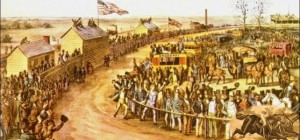 The following year, at the age of eight, Eclipse again returned to the track to collect three more triumphs. In the spring he bested Sir Walter in four-mile heats for $700 in prize money and in the fall met Sir Walter, Duchess of Marlboro and Slow and Easy for $1,000 purse again over four-mile heats. The stallion so devastated Duchess of Marlboro and Slow and Easy in the first heat they withdrew from the second and after his sole rival, Sir Walter, displayed a fit of temper, cruised home the easiest of winners in the second heat.
The following year, at the age of eight, Eclipse again returned to the track to collect three more triumphs. In the spring he bested Sir Walter in four-mile heats for $700 in prize money and in the fall met Sir Walter, Duchess of Marlboro and Slow and Easy for $1,000 purse again over four-mile heats. The stallion so devastated Duchess of Marlboro and Slow and Easy in the first heat they withdrew from the second and after his sole rival, Sir Walter, displayed a fit of temper, cruised home the easiest of winners in the second heat.
His final performance of the season was in a match race against another one of Sir Archy’s vaunted Southern offspring in the outstanding racehorse Sir Charles. Scheduled for November in Washington, D.C., with a total purse of $10,000 ($5,000 from each side), the race had to be postponed after Sir Charles sustained injury to a tendon just days away from the race. It was placed back on the calendar for November 20, 1822, but sadly never lived to its billing as Sir Charles succumbed to his injury and was pulled up.
Hours after the race results were in the books, the gauntlet was thrown down by a contingent of Southern horsemen, led by Colonel William R. Johnson, or the “Napoleon of the Turf,” was issued to Van Ranst and Union Racecourse. Johnson established a match race between Eclipse and any Southern horse of their choosing to be held at Union Racecourse the following spring with $20,000 to be paid out by the losing connections. Billed as “Eclipse against the world,” the South did not have to name their entry until post time and the race would be four-mile heats.
This was not just a horse race but a regional showdown. Johnson and his colleagues labored all winter to condition a horse that would beat Eclipse. They began with five contestants: John Richards, his full sister Bestsey Richards, Sir Henry, Flying Childers and Washington. All of the horses were by Sir Archy, who Johnson had trained, while the remaining member of the group was his grandson.
Johnson and his trainer Arthur Taylor traveled their charges to Bristol, Pennsylvania, to train up until the race. Washington was taken out of training and John Richards, Johnson’s favorite, was injured. All three of the horses were taken to Union Racecourse several days before the contest, but when Sir Henry’s name was revealed as Eclipse’s opponent, it did not shock many in the know.
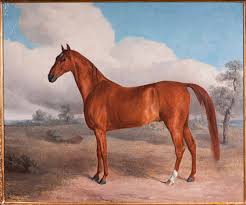 The four-year-old chestnut son of Sir Archy out of a Diomed mare was bred in North Carolina and had bested Bestsey Richards in four mile heats just recently in Petersburg, Virginia, in 7:54 and 7:58, the swiftest times in course history. Also, Sir Henry received a weight allotment from Eclipse based on his age. He only carried 108 pounds to the gate, while Eclipse was saddled with 126.
The four-year-old chestnut son of Sir Archy out of a Diomed mare was bred in North Carolina and had bested Bestsey Richards in four mile heats just recently in Petersburg, Virginia, in 7:54 and 7:58, the swiftest times in course history. Also, Sir Henry received a weight allotment from Eclipse based on his age. He only carried 108 pounds to the gate, while Eclipse was saddled with 126.
Oddly enough both horses shared the same coat color, markings and height (15 hands) when they brought up to the judge’s box, “The doubts which had been entertained (and there were many) that the southern sportsmen would pay forfeit and there would be no race, vanished at once,” the Post reported. “and all was in anxiety to see the result of the contest.”
The thrill was so palpable and the rivalry so heated, many Southerners bet their plantations on their horse and Northerners bet their life savings on theirs. Through all the din and fanfare, however, the man ultimately responsible for the meeting of these two titans of the turf, was not present. So where was Colonel Johnson?
After the Northerners held a resplendent dinner honoring the match race the previous evening, Johnson, who imbibed heavily on the plentiful libations and seafood dishes became so ill he could not leave his bed.
“Thus the Southrons, deprived of their leader, whose skill and judgment, whether in the way of stable preparation, or generalship in the field, could be supplied by none other, had to face their opponents under circumstances thus far disadvantageous and discouraging,” stated Cadwallader Colden, also known as his alias “An Old Turfman.”
Although is it well established who the victor of this historically vibrant contest is, Sir Henry did not disgrace himself in defeat. In fact, he and his rider took advantage of a last minute jockey change on Eclipse who had always been ridden by Samuel Purdy. Van Ranst selected a young jockey by the name of William Crafts to guide Eclipse to victory.
In the first heat, Sir Henry became the first and only horse to finish before Eclipse, but the undefeated champion was the victim of a horrific ride from his new rider. Crafts whipped the horse so hard, he cut his testicles and sheath so badly blood was flowing from them. Sir Henry, however, demonstrated his class as he hit the wire a length in front in a record time of 7:37 1/5.
Realizing his error in judgment, Van Ranst pulled Purdy, who was dressed in his silks from the crowd, to regain his mount for the remainder the heats. In the second heat, Eclipse brushed to the lead on the inside and defeated Sir Henry by two lengths in 7:49. For the third heat, Sir Henry was the recipient of a jockey change as Arthur Taylor climbed aboard. A trainer by trade, Taylor, was rumored to possess even more exemplary talents as a rider. He was told to allow Eclipse to take the lead and then unleash Sir Henry in the final furlongs. Purdy knew of these tactics and would not allow Taylor to reserve his horse’s energy. He contested strides with his rival until taking the lead and Sir Henry, ever gallant made his run in the end, but could not sustain it. Eclipse had annexed the match race.
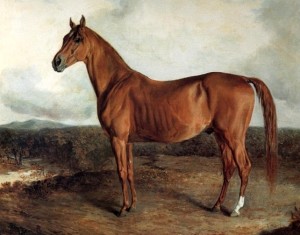 According to Cadwallader Colden, “While the North celebrated victory, Sir Henry’s supporters mourned their loss in no small way. Several Southerners, having lost their plantations, committed suicide on the spot and the financial impact of the loss was felt for some time. The challenge of a rematch was immediately made, but was turned down by John Stevens. It was nineteen years before the American Turf witnesses another such national contest.”
According to Cadwallader Colden, “While the North celebrated victory, Sir Henry’s supporters mourned their loss in no small way. Several Southerners, having lost their plantations, committed suicide on the spot and the financial impact of the loss was felt for some time. The challenge of a rematch was immediately made, but was turned down by John Stevens. It was nineteen years before the American Turf witnesses another such national contest.”
Johnson wrote of the race the following day in the Virginia Times, “I now embrace the earliest opportunity to inform you of the result of the Great Match. We Southerners all assembled here in fine spirits and joined the contest with strong resolution. We have lost the battle, but are not vanquished – could we have had an open course to run upon, and not the crowd, as was the case, we should have beat the race, as ours is the best horse. The first horse was taken by Henry, and he closely contested the 2d and 3d.”
Following his triumph, Eclipse was once again retired and sold through auction to Walter Livingstone for $8,050. He first stood in New York and then later in Virginia, for Johnson himself and Kentucky. He changed hands several times, but at the time of his death in 1847 at age 33 he was owned by Jilson Yates. He perished in Shelby County, Kentucky, and his offspring included Medoc, a quality racehorse and two-time leading sire, Mingo and outstanding filly Ariel. While never considered to be a leading sire, Eclipse certainly proved he was worthy and consistently passed his durability, speed and strong bone to his offspring. Fitting for one of the first great race horses bred in America and for a horse named after one of the legends of the sport.
Eclipse, however, represented so much more than an outstanding racehorse that elicited reverence. He demonstrated the rising regional tensions of a nation that were on a collision course for a bloody Civil War whose effects still remain today. He also was responsible for the star power of America’s first sporting event, the tumbling of the Dow Jones and the shuttering of Congress. There will never be another horse quite like him and his place not only within the annals of the American turf, but of the nation’s history are forever unrivaled.
